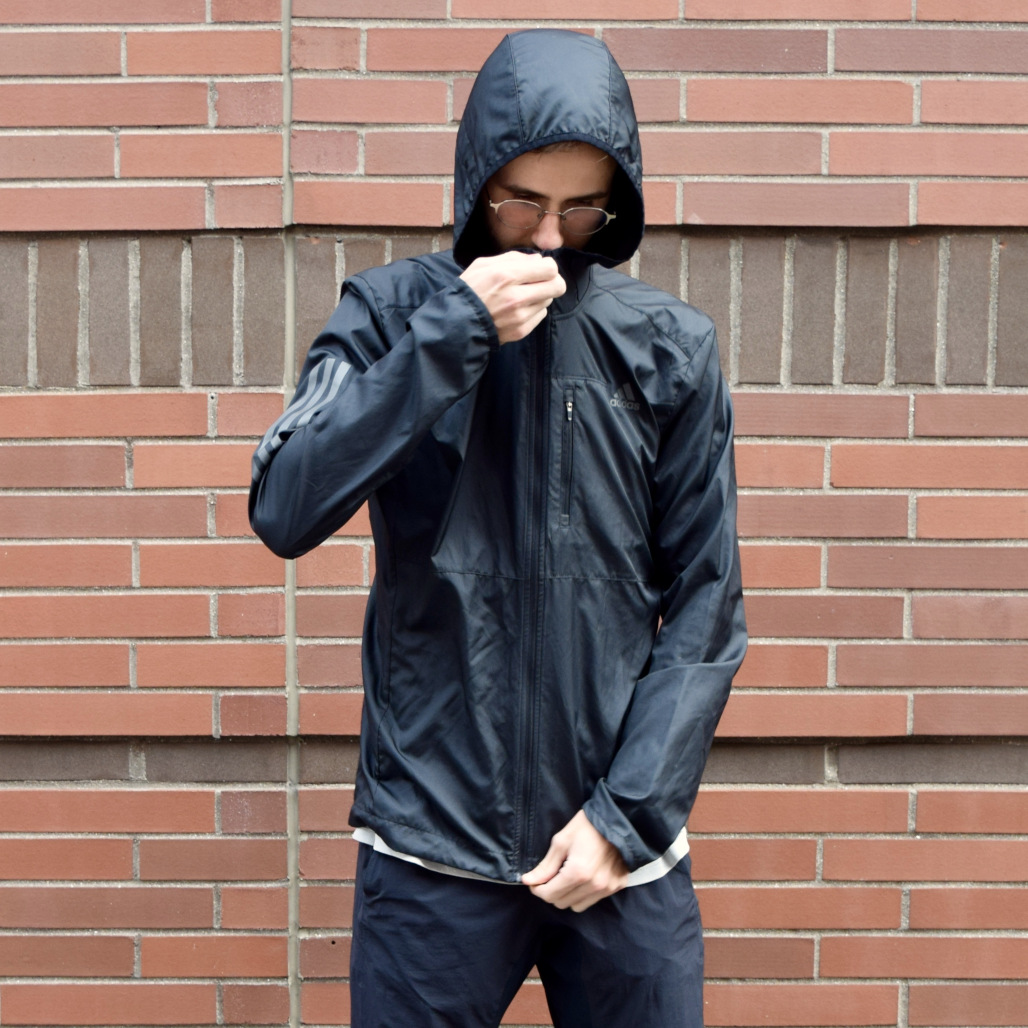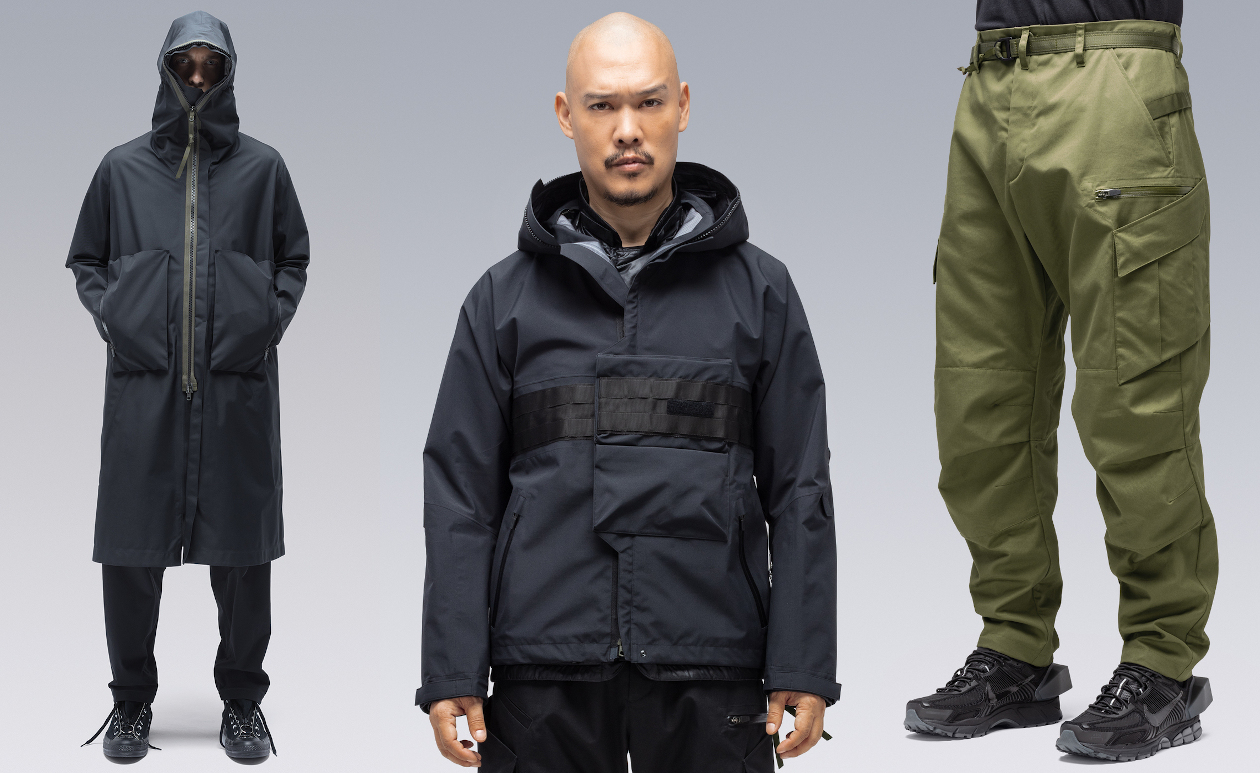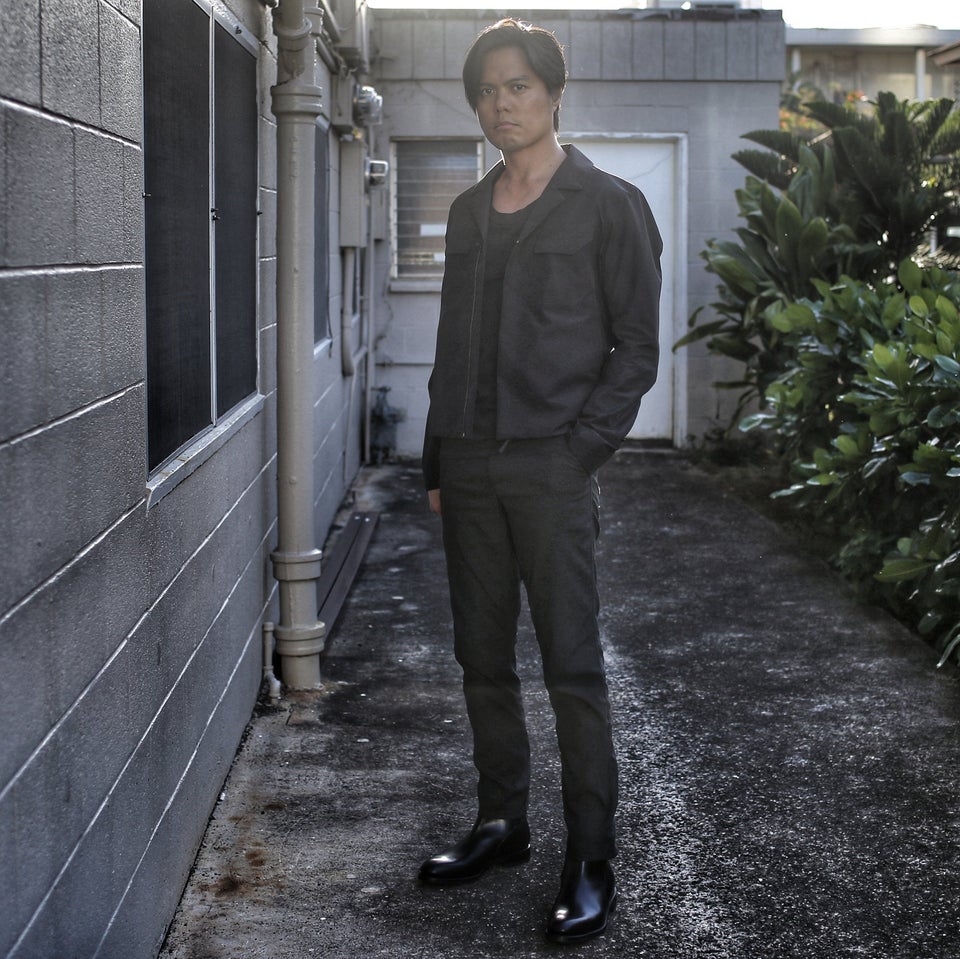Three techwear grails. Covetable, expensive and cutting-edge. But how do the J1A-GT, the Monitor and the Shelter From the Storm compare? Hrzlvn bought one of each to find out.
I have always wanted an Acronym jacket, and I thought that if I am really going to spend all that cash to get one, it might as well be the original. The latest model of the first jacket Acronym ever designed is the J1A-GT generation 2.2. It is the fifteenth iteration of the jacket, made from 3L Gore-Tex Pro fabric. You would think that after all these iterations, it should be closing in on perfection.
The J1A has a very straightforward cut, but Acronym jackets typically come with a lot of bells and whistles. This one has Acronym Interops, Acronym Sound, ForceLock, JacketSling, EscapeZip, SpeedLock, Gravity Pocket, AuxZip, convertible storm collar, removable storm hood and a total of nine pockets. I will not be going into details on all of these functionalities, but I find some of them useful – the jacket sling, escape zip, triple zipper, removable hood and AuxZip modular system – while others are more gimmicky. It is worth noting that adding all these features to the jacket increases the complexity quite a bit. Luckily, the execution is very good, if not close to perfect.
For such an iconic jacket, there are few in-depth reviews available on the J1A-GT. So how does Acronym’s flagship jacket really differ from other beloved techwear shells, like Outlier’s Shelter From the Storm and the Monitor from Veilance?
Size-wise the J1A-GT in small fits like SFTS in extra small and the Monitor in small. The inner fabric of the J1A-GT is identical to the Monitor shell, but the face fabric matters more for daily wear. I believe the Monitor shell has the toughest face fabric among these three, the rip-stop fabric N40r-X. It is probably not as dense as the high-tenacity nylon used in the Shelter From the Storm, but it seems more structurally durable. The face fabric of J1A-GT is very average compared with the other two. Probably below average in the realm of outdoor gear.

The most complicated construction within these jackets is probably the pockets. They all take a different approach here. Acronym stitches the bottom corners of the inner pocket to create a crease, so that the pocket is 3D-modeled internally. The stress point would be those two stitches. Veilance layers the fabrics inside the jacket so that it has extra room for the storage, but it is still flat, and stress points would be those two circular taped patches. Outlier just taped it straight flat since they made the pocket from an elastic material; the same one used in Ultrahigh Quadzip’s side pocket I believe. It can be expanded easily, and the stress point is obviously the pocket fabric itself.

These jackets use different kinds of zippers. I like the one on Acronym the best because it is the easiest to use. It is smooth, easy to connect and easy to disconnect, but definitely not the most functional one in terms of waterproofing. Outlier choses a bombproof one that is so dry that I find myself reluctant to zip it because it is so inconvenient. Veilance does the best job of integrating the zipper into the jacket, the most streamline job I have seen. The way it is done makes you feel like the zipper and the jacket were ultrasonically welded together.

There are two major pain points for a hard shell: delamination of the membrane, and delamination of the taped seams. Comparing the seams of the jackets, Acronym does a decent job with the seam tape, but the winner in this category is definitely Veilance. They use similar taping tech, if not identical. What makes the difference is the number of possible failure points. There is just way too much taping in the J1A-GT, because all the gimmicks, pockets, internal organizers, buttons and zippers add complexity to the design. Meanwhile, Veilance has truly embraced simplicity and translated the modernist credo “less is more” into a jacket. Outlier uses some suede tape which seems not as durable as nylon/poly, since there is already some fraying with very limited wear. It does feel nicer to the touch but I do not think this should be the first priority with this type of jacket.

Before I looked at them side by side I did not realize that the SFTS shares so many design elements with the J1A-GT. They have the same base concept of being optimized for storage (big pockets, multiple pockets), front flap, side zip and drop down hood. But even though they have pretty much the same cut and fit, they give very different vibes, and will appeal to different people. Overall, which shell suits you best will depend on your personal taste, style and wallet.
The J1A-GT offers more features than these competitors, the Monitor offers solid quality in a minimalist style, and the SFTS offers solid value for money. Instead of telling you which one is the winner, I want to share the price points so you can make your own verdict. The J1A-GT costs $1,600 + customs/tax (depending on where you are in the world). It is out of stock (like most hyped Acronym pieces) and the price in the secondary market is above $1,800. The SFTS costs $750 + customs/tax, and is also out of stock (like most hyped Outlier pieces). The price in the secondary market ranges from $600 to $800 but there is not much supply. The Veilance Monitor shell, finally, costs $1,100 retail. However you can find it for $600 to $700 in the secondary market, available in most sizes.




Goretex Pro was specifically designed for mountaineering and skiing so is the highest level of durability and ruggedness, while maintaining lightweight and breathability. Veilance uses the same GTX Pro setup on some of their jackets. Granted Veilance has better internal taped seams than Acronym.
Wow! Have owned and liked. Several shells beginning in 1972. I think before Goretex, etc. Probably none as high end as these. Will read your piece in the next few days. Maybe it help me search for a good replacement from my rather dead 1993 or so Marmot, with Goretex, lots of zippers, and pretty rugged synthetic outer shell fabric. Only the Goretex seems dead.,